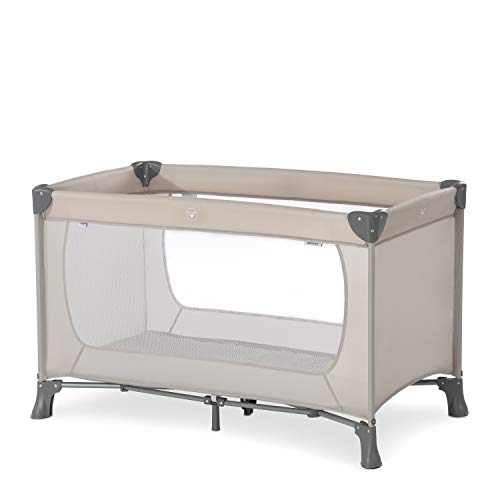Can a Newborn Sleep in a Travel Cot?
For new moms and dads, among the most important factors to consider when bringing a baby into the world is producing a safe and comfortable sleeping environment. Whether you're preparing a family journey or simply searching for a flexible and portable sleeping option for your little one, you might be wondering: Can a newborn sleep in a travel cot? The brief response is yes, but with correct safety measures to guarantee their safety and comfort. Here's what you require to know.
What Is a Travel Cot?
A travel cot (likewise called a travel crib or portable crib) is a lightweight, collapsible bed designed for infants and toddlers. It's typically used as a temporary sleeping service for journeys, sees to grandparents' houses, or as a second bed in another room. The majority of travel cots consist of a collapsible frame and a thin mattress or base for convenience and mobility.
However is it suitable for a newborn?
Can Newborns Sleep Safely in a Travel Cot?

Yes, a newborn can sleep in a travel cot, offered it satisfies particular safety guidelines and is set up properly. The key element is guaranteeing that the travel cot provides a safe and encouraging sleeping environment for your youngster. Here's how you can make it work:
Look For Safety Standards
When choosing a travel cot, ensure it sticks to security regulations, such as those described by ASTM International, the European Safety Standards (EN 716), or similar requirements in your country. comfiest travel cot should have durable construction, breathable mesh sides, and no spaces where your child might get trapped.
Utilize the Original Mattress
Travel cots frequently come with a thin, firm bed mattress particularly created for that model. This is intentional-- firm mattresses minimize the danger of Sudden Infant Death Syndrome (SIDS). Prevent adding extra padding or soft bedding, as these can posture suffocation dangers.
Follow Safe Sleep Guidelines
The American Academy of Pediatrics (AAP) and other health organizations suggest that babies sleep on a firm, flat surface area without pillows, bumpers, or blankets. Constantly put your newborn on their back to sleep in the cot, just as you would in a standard crib.
Display Temperature and Comfort
Travel cots are frequently made of breathable mesh, so your infant is less likely to overheat. Still, guarantee your newborn is dressed properly for the space temperature, as getting too hot is a risk aspect for SIDS.
Pros of Using a Travel Cot for Newborns
Portability
Travel cots are created with benefit in mind. They're lightweight, simple to put together, and compact, making them ideal for households who travel often or move in between spaces.
Adaptability
Lots of travel cots appropriate for newborns but are also roomy enough for your baby to grow into. This means your investment can last for months or even years.
Hassle-free for Small Spaces
If you're tight on area or do not have room for a full-size crib, a travel cot can be a practical alternative.
Cons of Using a Travel Cot for Newborns
Thin Mattresses
The thin mattress in a travel cot, while safe and company, may not seem as comfortable as a routine crib bed mattress. Nevertheless, remember that young babies do not need excessive cushioning, and a company surface area is in fact safer for them.
Lower Height for Parents
Many travel cots are rather low to the ground, which can be challenging for moms and dads who require to lift their child often throughout the night, specifically in the newborn phase.
Setup and Storage
While the majority of travel cots are easy to set up, the process can be troublesome for some models, particularly for sleep-deprived new moms and dads.
Is a Travel Cot a Long-Term Solution?
Although a travel cot can be a safe and hassle-free choice for your newborn, it may not always replace a full-sized crib for long-term use. The majority of travel cots are created for short-term sleeping arrangements and trips. However, some premium models are built with newborn inserts or bassinets, which permit the cot to grow with your kid and be used for extended periods.
Tips for Using a Travel Cot with a Newborn
Choose a Newborn-Friendly Model: Some travel cots include a raised bassinet accessory. This function offers a greater sleeping level that's easier for parents while keeping the child safe.
Assemble it Correctly: Double-check that the travel cot is safely assembled without any loose parts or gaps.
Present the Cot Early: If you're traveling, let your baby nap in the travel cot in the house initially. This can assist them get used to the new sleeping environment.
Keep It Close: Place the travel cot in your room for the very first few months. Room-sharing (however not bed-sharing) is recommended to decrease the threat of SIDS.
Final Thoughts
A travel cot can definitely be a safe and useful sleep service for a newborn, offered it fulfills security standards and is established correctly. It offers flexibility for parents on the go, while also working as a convenient alternative to conventional cribs in smaller areas. By following safe sleep practices and making sure the cot is suitable for your baby's needs, you can feel confident that your child is sleeping comfortably-- no matter where you are.
If you're thinking about a travel cot for your newborn, research study your alternatives thoroughly and, as always, consult your pediatrician for tailored advice. Safe sleep is the foundation of sweet dreams, for both your infant and you!
